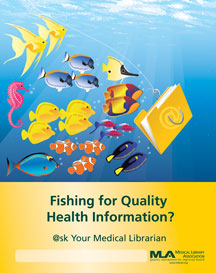The Equine Group LibGuide is available at http://guides.vetmedlibrary.missouri.edu/equine.
Thanks!
Kate
Your source for what's new at Mizzou Libraries
The Equine Group LibGuide is available at http://guides.vetmedlibrary.missouri.edu/equine.
Thanks!
Kate
EndNote X2 or earlier not recognizing the New Year? Getting a blank year field for 2010 citations?
Update your EndNote program so that 2010 publication years appear in your EndNote records. Note: EndNote X3 imports the current year correctly.
The free update is now available – see installation instructions. Once installed, this update corrects all future imports into EndNote. For 2010 records that were imported before the update was applied, please see the FAQ
Q: What does Anat Histol Embryol stand for?
Q:What’s the official abbreviation for JVECC?
Need help with a journal abbreviation?
Two good resources:
PubMed’s Journals Database: Enter in title words or abbreviation. The Journals database does list both MEDLINE abbreviation and ISO abbreviation (more often than not these are the same). If you’re preparing a manuscript, check the instructions for authors on which official abbreviation to use.
CAS Source Index (CASSI): From the American Chemical Society. Choose Title or Abbreviation from the drop-down menu. Does not include all veterinary journals, but does include some science journals not found in PubMed.
A: Anatomia, histologia, embryologia
A: J Vet Emerg Crit Care
Bonus question: How is Vaccine abbreviated?
Trick question! One-word journal titles are not abbreviated.
The FDA has recently updated its veterinary resources page and has created a Pet Health & Safety widget. More information about the widget.
Flash player 9 is required.
CAB abstracts has hit a milestone! Search CAB.

CABI News release
Monday 30 November 2009
CAB Abstracts hits six million records
CABI’s life sciences bibliographic database, CAB Abstracts, has reached six million records. This important milestone means that users have a complete perspective of international research through access to an ever increasing number of key scientific articles.
“The six million record milestone shows how we continue to expand our service and now we also include the full text of hard-to-find literature, 65,000 articles to date, to add further value for our customers,” said Dr Shaun Hobbs, Global Director of Content Development at CABI.
CAB Abstracts is a comprehensive bibliographic, abstracting and indexing database that covers over 150 countries, and over 50 languages. The subject coverage is extensive, including all aspects of agriculture, environment, veterinary sciences, applied economics, food science and nutrition.
As well as selecting from thousands of core scientific journals, CAB Abstracts also offers extensive coverage of ‘grey’ literature from around the world including: annual reports, general reports, books/book chapters, handbooks, bulletins, monographs, conference proceedings, newsletters, discussion papers, technical information, field notes and theses.
CAB Abstracts full text content consists of journal articles, conference papers and reports – 75% of which are not available electronically anywhere else.
With the PubMed redesign, the instructions for exporting citations from PubMed to EndNote have changed slightly.
Step-by-step instructions:
Note: Most browsers require you to save the PubMed information as a .txt file and then use the PubMed (NLM) filter to import records.
However, depending on your browser and settings, you may be able to Open the text file with EndNote instead of saving it (step 7 above). If you open the text file with EndNote, choose the PubMed (NLM) filter in order to import your records.
Of course, you can still connect to PubMed from within EndNote using the PubMed (NLM) connection file. The connection file is great for quickly getting known items into your EndNote library. However, if you’re doing extensive subject searching, it’s best to search PubMed directly to take advantange of its searching capabilities–and then export those citations to EndNote.
Questions? Contact Kate.
The new PubMed has arrived.
Major changes include:
Limits, History, and Details tabs have been consolidated into the Advanced Search.
MeSH terms available on the Abstract Display. [No more Citation display or AbstractPlus display.]
Results filters have been moved to the right.
The link to the Clipboard only displays if there are items in the Clipboard.
Searching capabilities (automatic term mapping; etc.) remain the same.
More information can be found in NLM’s Technical Bulletin and in PubMed’s tutorials
Have questions about the redesign? Can’t figure out what the heck is going on? Contact Kate.
Have you hugged your medical librarian today?
The Medical Library Association (MLA) created the NMLM observance to raise awareness of the important role of the health information professional. Patients and those in the health care community need the specialized services that medical librarians provide now more than ever before.
The Veterinary Medical Libraries Section of MLA is one of the most active and engaged sections!
Let the staff of Zalk Veterinary Medical Library know what we can do for you!

October 5th-November 14: Health Sciences Library

Join us as we host Changing the Face of Medicine, an exhibit chronicling women’s impact on the medical field. The exhibit highlights women’s battle to gain access to medical education, and also their breakthroughs and achievements as physicians. Come view the exhibit panels, browse the web kiosks and attend scheduled events.
Changing the Face of Medicine Home
The Changing the Face of Medicine Exhibit will be located in the Health Sciences Library from October 2nd to November 14th.
Interested in Zotero? Want to learn more about Google Scholar?
MU Libraries is offering several workshops geared toward graduate students. All classes will be held in 213 Ellis Library.
Full schedule and online registration.
Workshops don’t fit your schedule? Want a session on something else?
Contact Kate Anderson for courses tailored to CVM students and faculty.